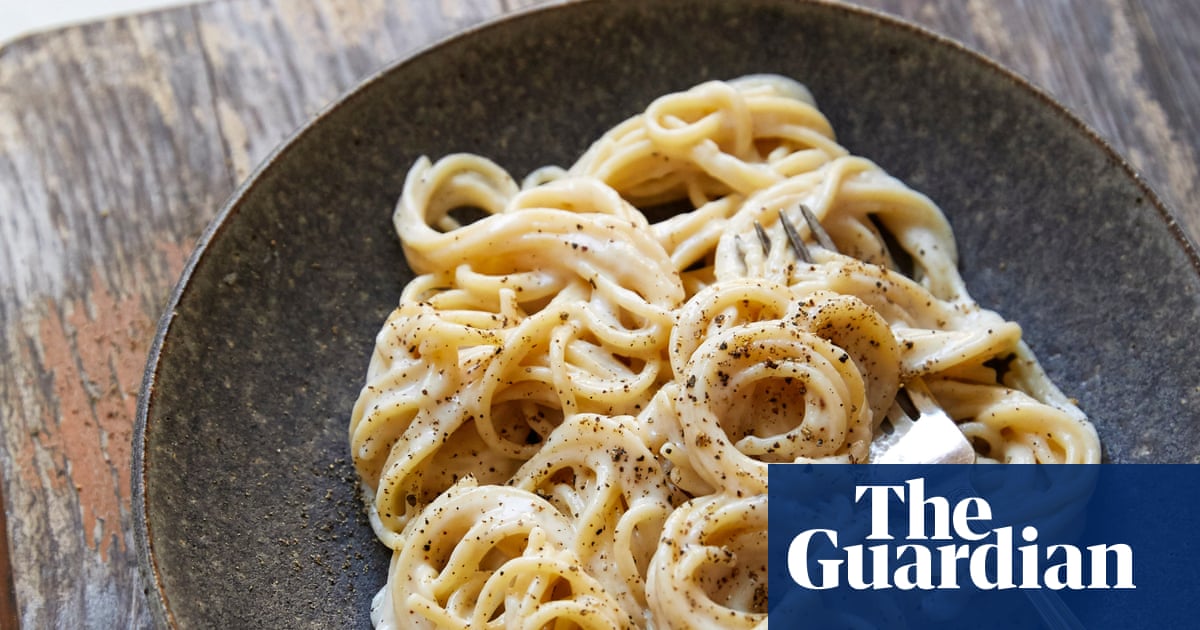
One of the UK’s most popular food websites has cooked up a storm in Italy after allegedly botching a recipe for the traditional Roman pasta dish, cacio e pepe, drawing diplomatic representations from the main trade association for Italian restaurateur.
A recipe on Good Food, formerly owned by the BBC, which continues to licence the web address bbcgoodfood.com – described cacio e pepe, a culinary institution in the Italian capital, as a “store cupboard favourite” that could easily be whipped up for “a speedy lunch” using “four simple ingredients – spaghetti, pepper, parmesan and butter”.
The notion that making cacio e pepe is easy was bad enough, but the presence of parmesan cheese and butter has been deemed a cardinal sin. Traditional cacio e pepe contains three ingredients: pasta (usually tonnarelli, a type of spaghetti), pecorino Romano cheese and black pepper.
Such is the fury, Fiepet Confesercenti, an association that represents restaurants in Italy, said it would demand a correction from the website in order to “safeguard this iconic dish”. Furthermore, it has taken up the issue with the British embassy in Rome.
The recipe appears to have been on the site for about three months, but despite a couple of readers calling out the butter blunder, it only now seems to have caught the attention of Fiepet Confesercenti, which was also offended by the brief preparation video that runs alongside it showing a chunk of butter being put into a pan.
Claudio Pica, the president of the Rome unit for Fiepet Confesercenti, said the association was “astonished” to see the recipe on such a popular and esteemed food site, adding that letters have been sent to Immediate Media, the site’s owner, and the British ambassador to Rome, Edward Llewellyn.
“This iconic dish, traditionally from Rome and the Lazio region, has been a staple of Italian cuisine for years, so much so it has been replicated even beyond Italy’s borders,” he added. “We regret to contradict the historic and authoritative British media, but the original recipe for cacio e pepe excludes parmesan and butter. There are not four ingredients, but three: pasta, pepper and pecorino.”
Pica admitted that while some chefs may dabble with the recipe, the main concern is that the website has misled readers by presenting the dish as the original.
The Guardian has asked Immediate Media for comment.
Italian newspapers have had a field day over the controversy, with the Rome-based Il Messaggero writing: “Paraphrasing the famous British anthem ‘God save the king’, Rome restaurateurs are now saying: ‘God save the cacio e pepe”.”
The Guardian’s 2021 recipe for the dish by the food writer Felicity Cloake comprises just pasta, pepper and pecorino.
It is not the first time the foreign media has become embroiled in an Italian food row. In 2021, the New York Times published a tinkered-with recipe for another classic Roman pasta dish, carbonara, which included tomatoes. While the description of the recipe, called “smoky tomato carbonara” and created by Kay Chun, did warn readers that it was not the original, Coldiretti, the Italian farmers’ association, lashed out, saying the alteration was “the tip of the iceberg in the falsification of traditional Italian dishes”. Given that Chun’s recipe was again published in 2023, it appears the newspaper was unperturbed by the indignation.
Italians often mock foreigners for their interpretation of an Italian recipe, especially pineapple on pizza or mixing pasta with chicken.
The New York Times also provoked outrage in the UK in 2018 after publishing a recipe in which it described the yorkshire pudding, a roast dinner staple, as a “large, fluffy pancake” that was excellent for “breakfast, brunch, lunch and dessert any time of the year”.








